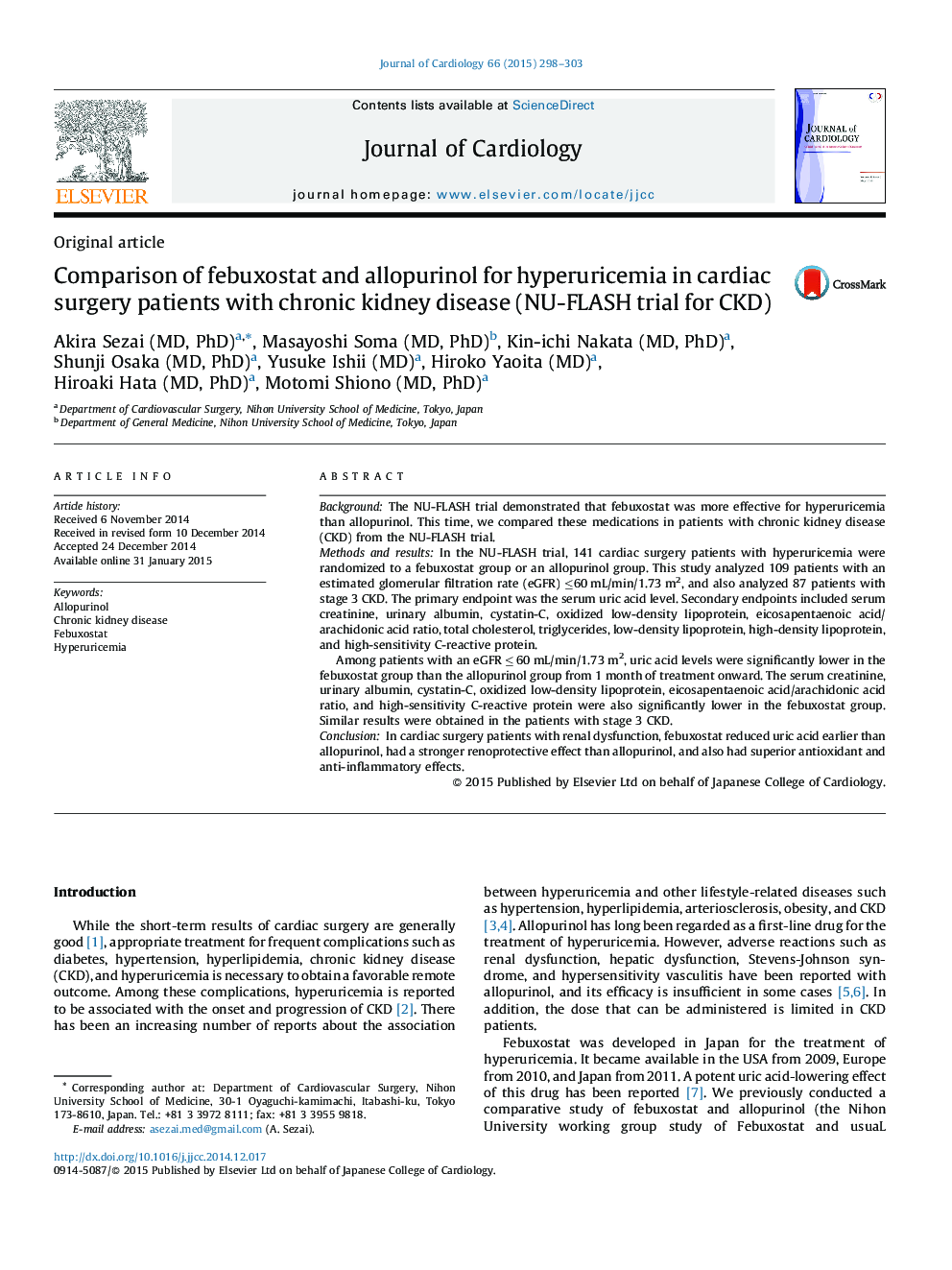| Article ID | Journal | Published Year | Pages | File Type |
|---|---|---|---|---|
| 2962923 | Journal of Cardiology | 2015 | 6 Pages |
BackgroundThe NU-FLASH trial demonstrated that febuxostat was more effective for hyperuricemia than allopurinol. This time, we compared these medications in patients with chronic kidney disease (CKD) from the NU-FLASH trial.Methods and resultsIn the NU-FLASH trial, 141 cardiac surgery patients with hyperuricemia were randomized to a febuxostat group or an allopurinol group. This study analyzed 109 patients with an estimated glomerular filtration rate (eGFR) ≤60 mL/min/1.73 m2, and also analyzed 87 patients with stage 3 CKD. The primary endpoint was the serum uric acid level. Secondary endpoints included serum creatinine, urinary albumin, cystatin-C, oxidized low-density lipoprotein, eicosapentaenoic acid/arachidonic acid ratio, total cholesterol, triglycerides, low-density lipoprotein, high-density lipoprotein, and high-sensitivity C-reactive protein.Among patients with an eGFR ≤ 60 mL/min/1.73 m2, uric acid levels were significantly lower in the febuxostat group than the allopurinol group from 1 month of treatment onward. The serum creatinine, urinary albumin, cystatin-C, oxidized low-density lipoprotein, eicosapentaenoic acid/arachidonic acid ratio, and high-sensitivity C-reactive protein were also significantly lower in the febuxostat group. Similar results were obtained in the patients with stage 3 CKD.ConclusionIn cardiac surgery patients with renal dysfunction, febuxostat reduced uric acid earlier than allopurinol, had a stronger renoprotective effect than allopurinol, and also had superior antioxidant and anti-inflammatory effects.
